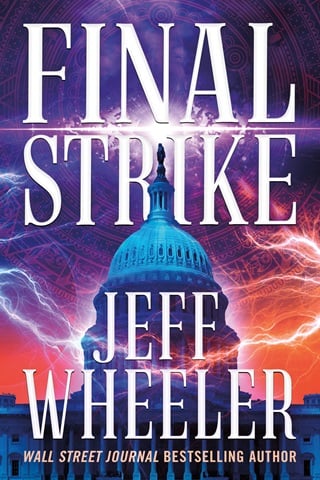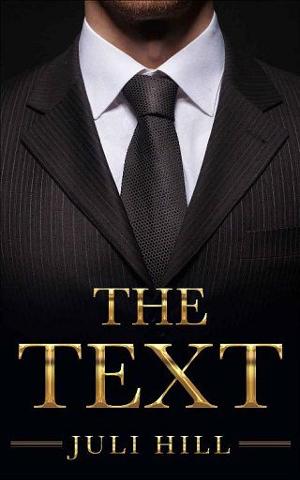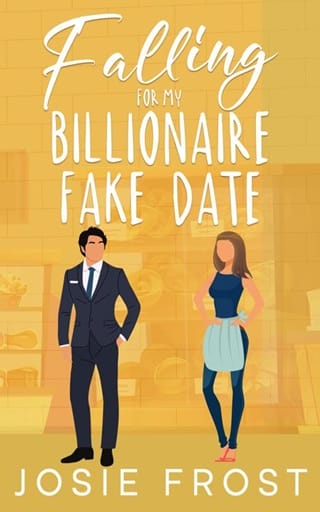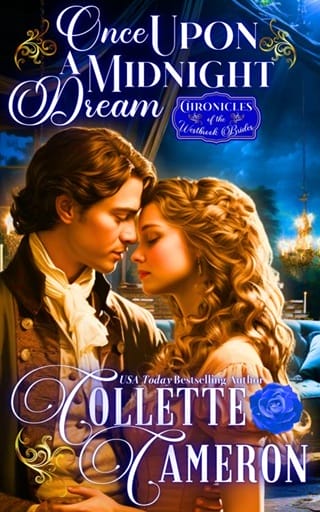CHAPTER THIRTY-THREE JAGUAR TEMPLE CALAKMUL BIOSPHERE RESERVE
JAGUAR TEMPLE
CALAKMUL BIOSPHERE RESERVE
January 10
In their confined cell, Roth and Brower could do no more than talk while they waited for someone to come for them. Three darts wasn’t much, but it was something. Enough to incapacitate a guard after the kem ?m was removed. Roth sat by the opening, crammed in the corner. Brower was against the far wall, within sight. The plan was that Roth would use one dart to prick the guard in the ankle after the barrier was removed. Brower would lunge out of the room and attack anyone else in the hallway in the hope his FBI training in hand-to-hand combat would be enough to take out their foes. They’d try to save the remaining two darts but would use them if necessary. Then they’d free the other prisoners, somehow, and make their way to the jungle. Not a great plan, but the only one they had.
“Let me ask you this, Jonathon. Do you believe the Maya gods are real? That this Kukulkán deity is going to return like the prophecy said he would?”
“I don’t know,” Roth said slowly. “I’ve spent the last year researching it.”
“I know you have. Which is why I’m asking you. These two factions have been enemies for a very long time, I gather.”
“It’s been a stumbling block that so many historical documents were destroyed by the Spanish in the 1500s. The priests who interviewed the native Maya and Aztec interpreted what they were told through their own lens.”
“Give me an example.”
“Take Kukulkán or his Aztec version, Quetzalcóatl. A bearded god who appeared from the east, taught the people construction, to live harmoniously with each other, and to stop performing human sacrifices. Sounds a little like Christianity. Some of those priests, back in the 1500s, wondered if one of the twelve apostles had come to Mesoamerica as a missionary. Some reports even said Quetzalcóatl had holes in his hands. There was a statue found in the Yucatán, for example, that depicted him that way. There’s another statue in Oaxaca that also had holes in the hands. So was it an apostle ... or was it Christ himself? We only know a fraction of what they knew five centuries ago.”
“It could mean all sorts of things,” Brower suggested. “A religious person would see evidence of what he or she believed. It’s the Baader-Meinhof phenomenon.”
Roth smiled. He was liking Brower more and more. A smart guy. “Yeah, I know. It’s also called the recency bias or the frequency illusion. I’m glad you mentioned it because I had the same thought too at first. But here’s the weird part. Farther south, in Peru, where the Inca built Cusco and had a completely different culture and belief system, there is the legend of Viracocha. It’s strikingly similar to the legend of Kukulkán and Quetzalcóatl. A bearded man who showed up and taught the people to live in harmony and instructed them in advanced technology—oh, and Viracocha could walk on water. That was a detail the Aztec and Maya didn’t have in their legend, but a familiar tradition in Christianity, right? From what archaeologists have told us, those two civilizations didn’t interact with each other. Both have legends that talk about a great flood too, just like myths in other parts of the world.”
“I’ve never heard of Viracocha before.”
“Neither had I before I started studying this stuff. And the Inca also had a legend that Viracocha would return. Just like Quetzalcóatl in Aztec lore and Kukulkán for the Maya. Modern scholars say it’s just the Spanish influence weaving Christian myths into local culture, but I’m not convinced. I can’t explain it. And guess what—a Cherokee tribe had similar myths, and they lived much farther north. No connection with the Aztec and Maya at all.”
“How do you explain it, then?”
“I don’t know that I can,” Roth said with a sigh. “But all of these legends mean something. There’s an author who wrote a book called Fingerprints of the Gods. He tried to tie all of these legends together, from Mesoamerica and the Mediterranean. His theory is that there’s a common origin story. We can’t know that for sure, of course. What we do know is that these ancient Mesoamerican civilizations all knew the planets. That they were incredibly educated on the cosmos, even more so than European scientists back in the day, and that they left prophecies and predictions about what would happen in the future.”
“And you think Calakmul has misinterpreted those predictions?”
“I do. I think they were about Kukulkán. Or Viracocha. I think it heralds a return of this more enlightened people. The ones who didn’t want human sacrifice. The Aztec, you see, believed human sacrifices kept the universe in balance. The two sides have been at war for a long time. What if the prophecy is about the end of the Calakmul family? The end of the line?”
“I wouldn’t be opposed to that,” Brower chuckled. “I’ve never felt so helpless before. Whether it’s technology or magic, it’s more advanced than what we have.”
“I know,” Roth agreed. “It’s stumped archaeologists for decades.”
“How so?”
“How did a primitive people manage to move such huge pieces of stone, each one weighing tons, in order to build these huge temples? The wall at Saksaywaman in Peru, for example, has pieces that weigh two hundred tons. They fit so precisely and without mortar that they’ve stood for centuries, or even millennia. But there is no evidence of where this engineering know-how came from to lift such a stone, let alone slide it perfectly into place. Even in our modern cities, you can see cranes as evidence of how buildings so tall could be built. Nothing like that here, though. Some of the pyramids here in Mexico are even bigger in circumference than the pyramids of Giza.”
“Truly?”
Roth held up his hands. “There’s more that we don’t know than what we do know. And I’ve only been researching this for the last year. I realized in the arena during the death game that we were playing the game the wrong way. Instead of whacking the rubber balls, the ancients had used their kind of magic to levitate them and send them into orbit. Wouldn’t it also be possible for them to have used the kem ?m in a similar way with construction? A force that amplifies force to lift the stones?”
“Just like that force field blocking the door bounces back harder than something thrown against it?”
“Exactly. That’s why I kind of hope Kukulkán does return. He could teach us knowledge that has been lost for centuries. For millennia. We always assume the present is controlling the future. That our inventions are going to change everything. Futurists have been predicting for years that we should look more closely at the past.”
“Futurists like Ray Kurzweil?” Brower said.
“Yeah. Didn’t he say something about exponential curves? I don’t remember the quote, but it reminds me of what you said back at FBI headquarters.”
“I’ve followed his work. We think the future is linear. With technology, it’s exponential. If you take thirty steps, you don’t get to thirty. You get to a billion.”
“Yes!” Roth agreed emphatically. “Have you read Alvin Toffler’s work?”
“I love Toffler. He said that the illiterate of this century will be those who cannot learn, unlearn, and learn again.”
“Yes! Oh, I wish we weren’t about to die. I could hang out with you. We keep looking to the future for the answers. But what if the Maya already had a cure for cancer? Or diabetes?”
“It would put a lot of pharma companies out of business,” Brower said.
“It might even put the Defense Department out of business. Isn’t that another reason why the Spanish might have burned the knowledge they’d found? What if they learned something they weren’t ready to accept? That established history wasn’t accurate. Better to burn the codices and keep the world in ignorance. Rather than learn, unlearn, and relearn.”
“We can’t undo what the Spanish did when Cortés came. Or what the other immigrants did when they came to the Americas after that. I don’t think anyone is going to just go back to Europe and start over again. Despite what Illari and her faction want.”
“Agreed. What Illari and her ilk want isn’t going to happen. But that doesn’t mean the status quo can’t change in other ways. There was a Hungarian doctor who figured out germs were killing mothers in a maternity ward in Vienna. No one believed him, even though he was right, and he was eventually put into an insane asylum. It took Pasteur’s backing of the same idea to convince people of the truth. Knowing something isn’t enough. Being a good communicator is essential.”
Brower gave an amused grunt. “When you first arrived in DC, I wasn’t open to the idea that people could transform into jaguars. Or that shields could repel bullets. It wasn’t until I saw it happen with my own eyes that my skepticism collapsed. Now that I know what’s possible, I think I can help persuade others to consider another perspective.”
“I get what you’re saying. My mind was pretty closed too until we were put in a life-and-death situation. I knew we couldn’t beat the Beasleys physically. It forced me to consider other options.”
“When they come for us, we’re not going to have a lot of time,” Brower said. “So let’s think outside the box once more. If the kem ?m amplifies force and repels matter, then if I shoved a guard into another web, it would amplify the force of my shove. Do more damage to him.”
“Yes,” Roth said, sitting up straighter.
“I studied aikido in college,” Brower said. “It was all about using momentum and small applications of force to have an outsized reaction.”
They both heard the door at the end of the corridor open on its noisy hinges. Roth’s heart rate began to intensify.
“I think this is it,” he whispered.
Brower nodded and rose to a crouch, arms folded around his knees. His suit was already torn in a few places. Roth picked up the poison dart and squeezed it tightly between his fingers.
“Bring the German chancellor first,” Jacob Calakmul said, his voice echoing down the stone corridor. “Then the British PM.”
Roth and Brower exchanged glances. They’d both assumed that they would be first. And why was Jacob down here in person? Roth’s confidence began to quiver.
From beyond the web of kem ?m, several warriors marched past their cell. In a few moments, they returned, dragging a man in a suit with gray hair back toward the stairs. Then another was fetched.
“Why is Calakmul speaking English?” Brower whispered.
“The king of Spain next,” Calakmul directed. He came to stand just outside their cell, his back to them. Roth saw he was wearing his ceremonial attire, so his calf muscles were visible, just beyond the kem ?m. The temptation to stab him was hard to control, but he knew better.
More commotion, and another man was hauled away. The king of Spain was gibbering in Spanish. He looked terrified.
“Take them to the temple and bring them to the altar,” Jacob said. Then he turned and faced their cell. There was something wild in his eyes. He looked unhinged.
“Are you ready to die, Mr. Roth?” Jacob said. “It is time to climb the temple.”
Roth realized why Jacob was speaking in English. It was for their benefit. He was saving Roth and Brower for last to show them they had failed.
Jacob waved his hand over the doorway and the kem ?m disappeared. He stood outside the entrance, his gaze mocking.
“Aren’t you going to try and stab me?” he taunted. “You think I am easy prey? I don’t need any guards to handle you both. It insults me for you to presume I haven’t considered your every move. Or do you believe my brain is still underdeveloped?” He said the last words with bitterness.
Roth knew several things in that moment—Jacob had somehow heard his entire conversation with Angélica. Now Angélica was dead, and he would die next.
And Jacob would enjoy every moment of it.
 Fullepub
Fullepub 



